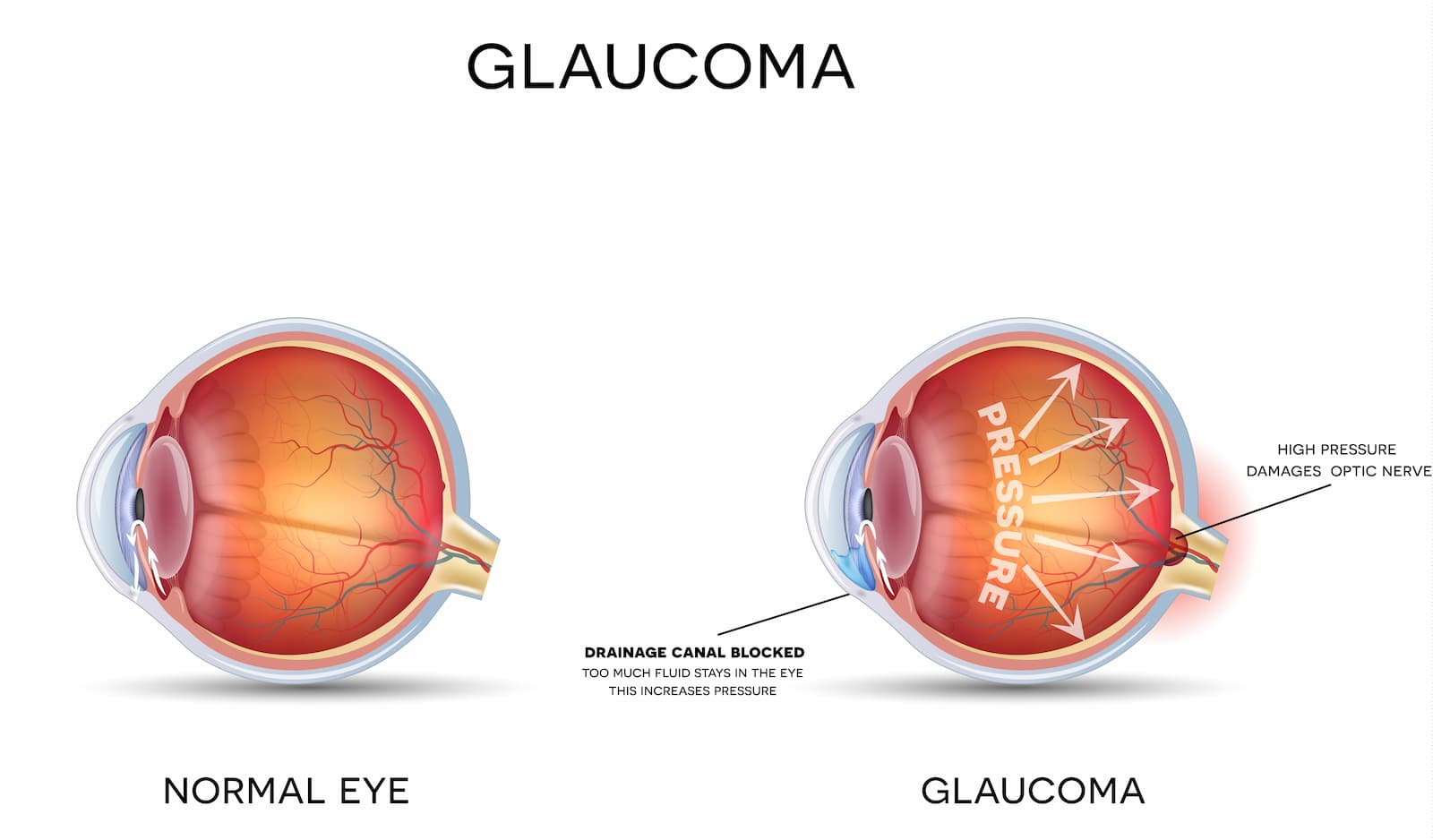Glaucoma
What is glaucoma?
Glaucoma is a disease of the optic nerve at the back of the eye. It occurs when the pressure inside the eye is too high for that individual eye. This then damages the optic nerve and causes a loss of peripheral vision initially and then even central vision if it is not treated. It can lead to blindness if not treated.
How common is glaucoma?
Under the age of 40, glaucoma affects approximately 1 in 10,000 people. Over 40 it becomes 1 in 200 and over 80 it becomes 1 in 10.
What is normal pressure?
95 percent of the population have pressures of between 10 and 21 mm Hg (same unit as blood pressure).
If your pressure is over 21 your risk for glaucoma increases. Some people with sensitive optic nerves can have glaucoma with pressures even under 21. This is called “low tension glaucoma”.
What are the symptoms of glaucoma?
Most people have no idea at all that they have glaucoma. There are 2 main types of glaucoma, open angle and closed angle. Open angle is more common and there is no pain at all associated with it. Closed angle glaucoma patients can have severe pain in an acute attack though most have no pain or sometimes a slight brow ache in a dark room such as movie theatres or dimly lit restaurants where their pupils dilate a bit and clog their narrow angles.
As most people have no symptoms at all, it is important to have regular eye exams over 40 to detect this blinding disease early.
How is glaucoma detected in an eye exam?
We assess the optic nerve “live” at the slit lamp microscope, we photograph it with a digital retinal camera and we image it on an OCT scan (Optical Coherence Tomographer) to determine whether the thickness of the nerve fibres are in the normal range.
We use the slit lamp microscope to determine if you have open or narrow angles.
We measure your intraocular pressure and central corneal thickness.
If there is any index of suspicion with any of the above tests, we will also then do a computerized visual field test.
How is glaucoma treated?
Glaucoma is treated by lowering the eye pressure. This can be achieved using eye drops on a daily basis, laser treatment or even surgery if need be. Eye drops are by far the most common method.



